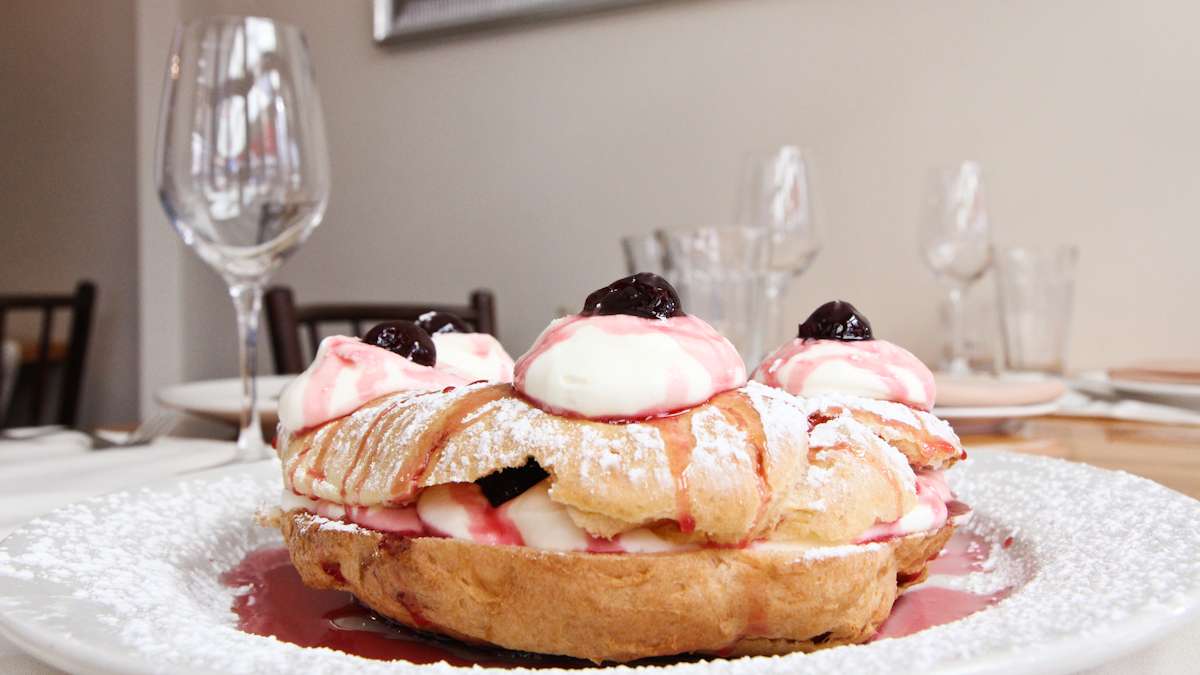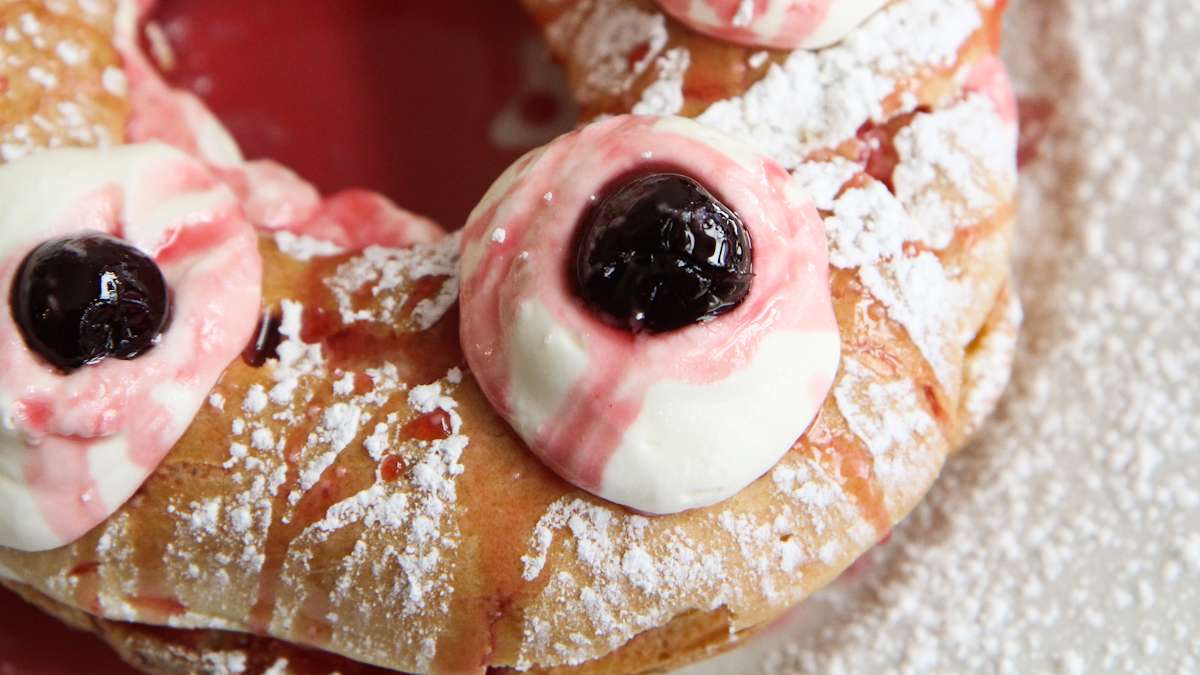The thing about Neuf
It’s nothing you’re used to. Or even prepared for. But the depth of flavor draws you into an experience you didn’t know you’d been missing.
Nowhere is French culture felt more in America than in its kitchens. From Julia Child’s influence over the modern American chef to the whole grain mustard currently tucked in your refrigerator door.
But, truth be told, there’s more than one way to poach a poussin, and French cuisine didn’t develop in a vacuum. It’s evolved. And the rustic, classic techniques historically associated with French cooking have also influenced and been influenced by cooking styles throughout the world … and, in particular, Northern Africa.
Just as we’ve seen over the past week, conflict has a way of changing the characteristics of a place, its people, and the culture that develops within.
Of course, when we think of Africa the next logical progression is not a French brasserie. But Northern Africa, in particular, Morocco and Tunisia, have an interconnectedness with modern Europe that maybe only historical junkies realize. Through centuries of invasion and colonization, these seemingly foreign lands find themselves intertwined. Their cultures meshed. And their cuisines forever changed.
This is the kind of French inspiration you should expect to find at Neuf, Joncarl Lachman and Bob Moysan’s new Ninth Street locale.
It’s the kind of inspiration you might find by chance; traveling through a city, wandering its open air marketplaces, only to find a restaurant with such “tattered elegance,” as Lachman would call it, that you’re drawn in by its warm glow and hopes of exotic hospitality.
That’s the thing about Neuf.
It’s unexpected.
It’s bold yet nuanced; simple yet layered; rough and delicate, all at the same time.
It’s nothing you’re used to. Or even prepared for. But the depth of flavor draws you into an experience you didn’t know you’d been missing.
Lachman had been mulling over the space at 943 S. Ninth St. for quite some time, trying to decide if he was up for the challenge of opening in the Italian Market.
“I changed my mind five times on this space because I was afraid of the market, to be honest,” Lachman said. “And finally, we said, let’s just do it, and we went for it, and it’s been great.”
This is the fourth restaurant he’s opened with now husband, Bob Moysan. Two in Chicago which they sold to come back East, and now two here in Philly — Noord eetcafe and Neuf.
Moysan runs the front of the house. And while Lachman’s food is the obvious star, Moysan’s artwork steals the spotlight within the space’s boudoir design. The art is baked right in to the concept and brings a finished feeling without trying too hard.
The African inspirationLachman spent years traveling around Europe. Before going to culinary school in his 30s, he waited tables in upscale restaurants. He would save his money and travel during the winter months. It was during these travels that he — and in later years, Moysan — fell in love with the North African flavors.
“I love the combination of dried fruits with meats,” Lachman said. “And the roasted vegetables with tomato broth and things like that.”
And let’s not forget the spices. Like the cumin in the Tunisian beef stew. Its flavor, so deep and concentrated, tastes as though it’s reduced all night.
And the custom spice blends from the Italian Market spice shop such as the ras el hanout.
Not familiar? It’s not surprising. And chances are if you’ve had it before, it’ll be different the next time you come across it in a dish.
“Ras el hanout kind of means, the grocer’s head or the top of the shelf,” Lachman explained. “So every family, kind of with Italian cooking with tomato sauce, with every family and every grandmother in North Africa and Southern France, if they’re cooking with ras el hanout, they have their own recipe.”
Neuf’s blend includes rose petals, cayenne pepper, white pepper, ginger, caraway (Lachman’s favorite spice), coriander and cumin.
It’s this mix of dried fruits, nutty pastes, big coarse grains of fresh cracked pepper, and layers and layers of heavily spiced broths and marinades that makes it nearly impossible that you’ve had something quite like it before.
Unless of course you frequent Morocco regularly, or the Tunisian marketplaces in Marseille. And if so, kudos to you!
Even the salads take a rustic trounce through the herb garden as Lachman likes to tear up a bit of basil or add fresh cilantro and parsley to dishes like the fennel three ways, a crunchy reminder that winter flavors can be comfy and fresh all at the same time.
Lachman’s command of seafood is also inspired with two strong menu choices in both the monkfish and swordfish. With their sauces strong and their fillets wonderfully prepared, the addition of nut flours and dried fruits really takes the textures and pops of unique flavors to another level.
And when you think you’ve had it all … all of the wonderfully new and fabulous flavor combinations, a swirl of pink puffed pastry catches your eye as it moves through the dining room.
Qu’est-ce que c’est?
It’s the Paris-Brest, a dessert made for sharing and every bit as intriguing as the rest of the experience.
At first glance it may look overly sweet. But that couldn’t be further from the truth. The pastry is thicker, almost like an Italian Easter bread, and just a smidge past savory toward dessert on the sweetness spectrum. The cream is light, its rosewater flavor delicate, subtle, and dotted with candied cherries, carrying this perfect ending through.
Be sure to thank the chef Chances are he was the one who brought out the dessert. Or maybe even the bread. He may even bring your food to the table, and take the lid off of the handmade tajine.
The thing is, Lachman loves the room. He loves the food, sure, but it’s the guests he greets … each table. Spending time to invite and welcome, smile and laugh. He shares in the experience with customers and creates a kind of environment few back-of-the-house guys could ever actually appreciate.
“I like people to feel like they’re coming into our home,” Lachman said. “I’m usually out front greeting people. I’m here dealing with the food, and it’s my menu as well, but I like to be out front and just making people feel good.”
Behind the bar, the pun’s intendedAs the dining room ebbs and swells to the flow of the night’s service, the bar offers a tide all its own. With a full commanding view of both kitchen and dining room, bar manager Jesse Cornell keeps his crew operating at full tilt.
Lachman was very hands-on when it came to creating the wine list with offerings from Lebanon, and the Canary Islands. But where cocktails are concerned, it was up to Cornell to piece together a variety of libations bold enough to stand up to the kitchen’s flavors, while subtle enough to know you’re having something special.
There’s cognac in the French 75 instead of gin. They riff a Negroni with the Take 5, adding a little bit of peach to make it bitter but balanced. There’s the Dirty Picholine that’s just the right amount of naughty, and a standout for scotch drinkers, the George Burns.
“I’m really proud of the drink,” Cornell said, “but I made such a simple substitution, I feel like I can’t really take credit for making a new drink.”
Here’s a quick cocktail lesson. A Rob Roy is a Manhattan with a blended scotch like Johnny Walker or Dewars. And a Bobby Burns is a Rob Roy with a half ounce of Benedictine added. Taking the Bobby Burns a step further, Cornell substituted the blended scotch with a smoky scotch, Laphroaig and mixed that with a rye whiskey.
“So then the smoky Bobby Burns becomes the George Burns, cause I love puns,” Cornell said.
And who doesn’t love a pun?! Or a Manhattan with a hint of an old man stogie. It’s actually a really wild combination. And yet subtly fitting.
There’s a lot of that there, at Neuf. So many strange, new, intoxicatingly wild combinations. If you take a minute to let it all sink in, you’ll come to the realization that there really is nothing else like it here in Philadelphia.
“I think what our main secret is, is that you disarm people when you walk in the door,” Lachman said. “You come in and you’re given a figurative hug, where I’m always happy when people walk in.”
WHYY is your source for fact-based, in-depth journalism and information. As a nonprofit organization, we rely on financial support from readers like you. Please give today.



















